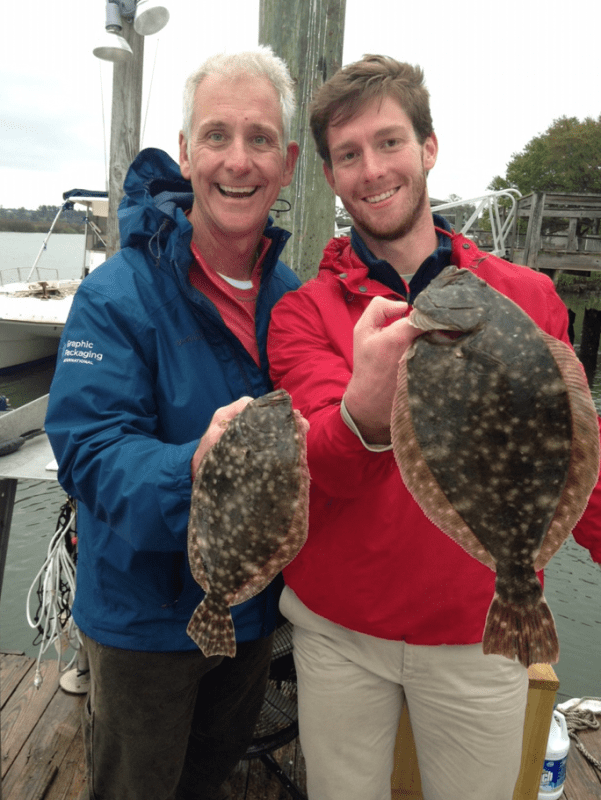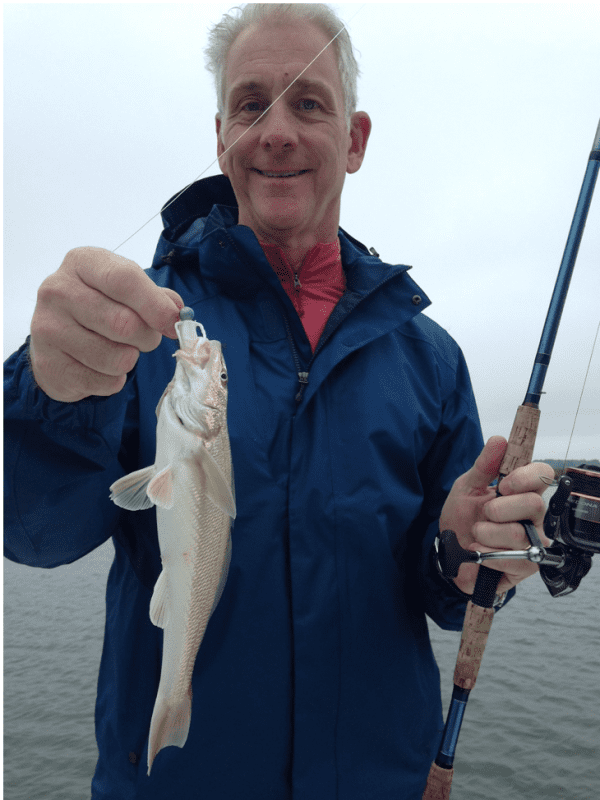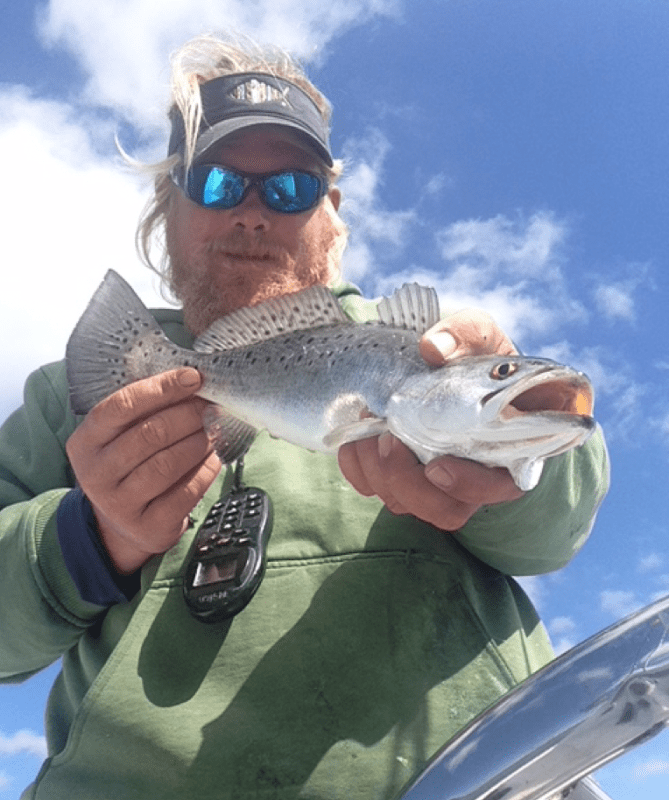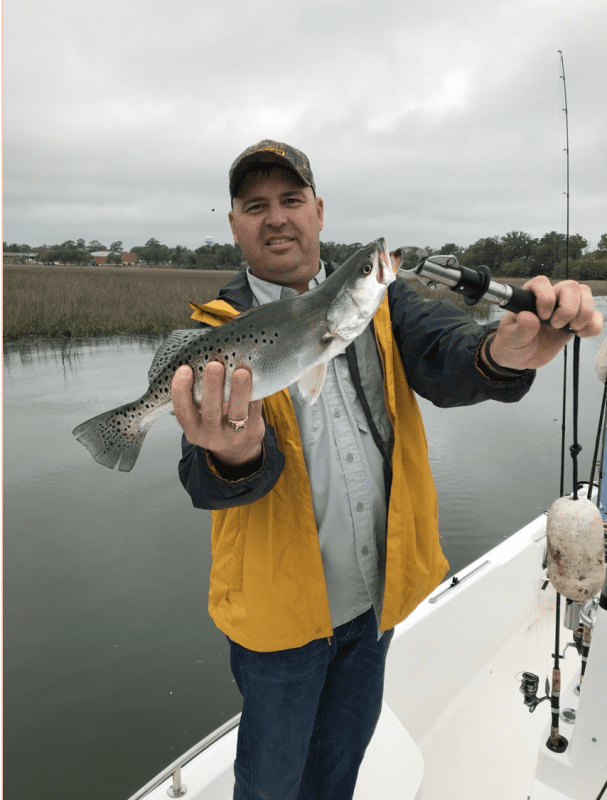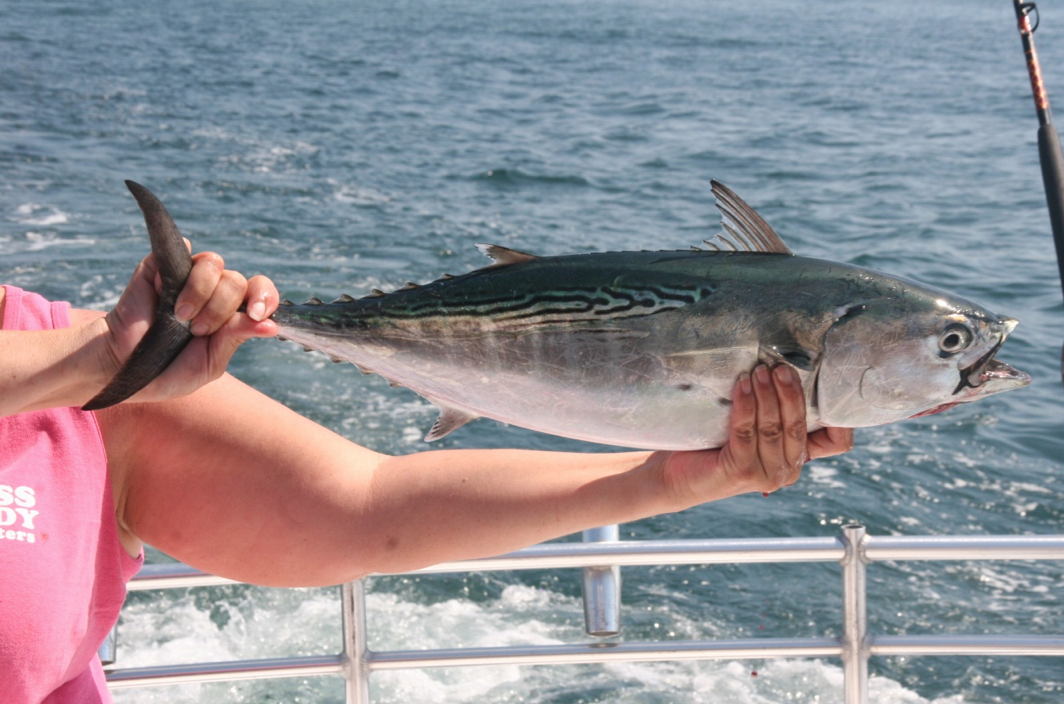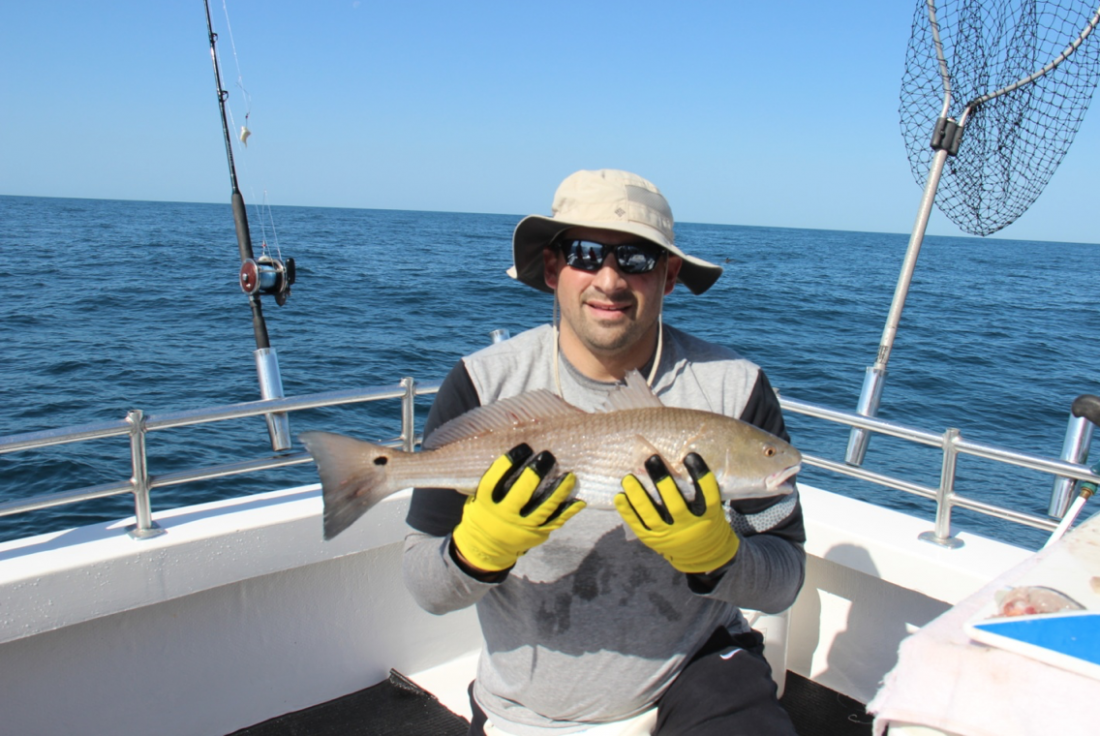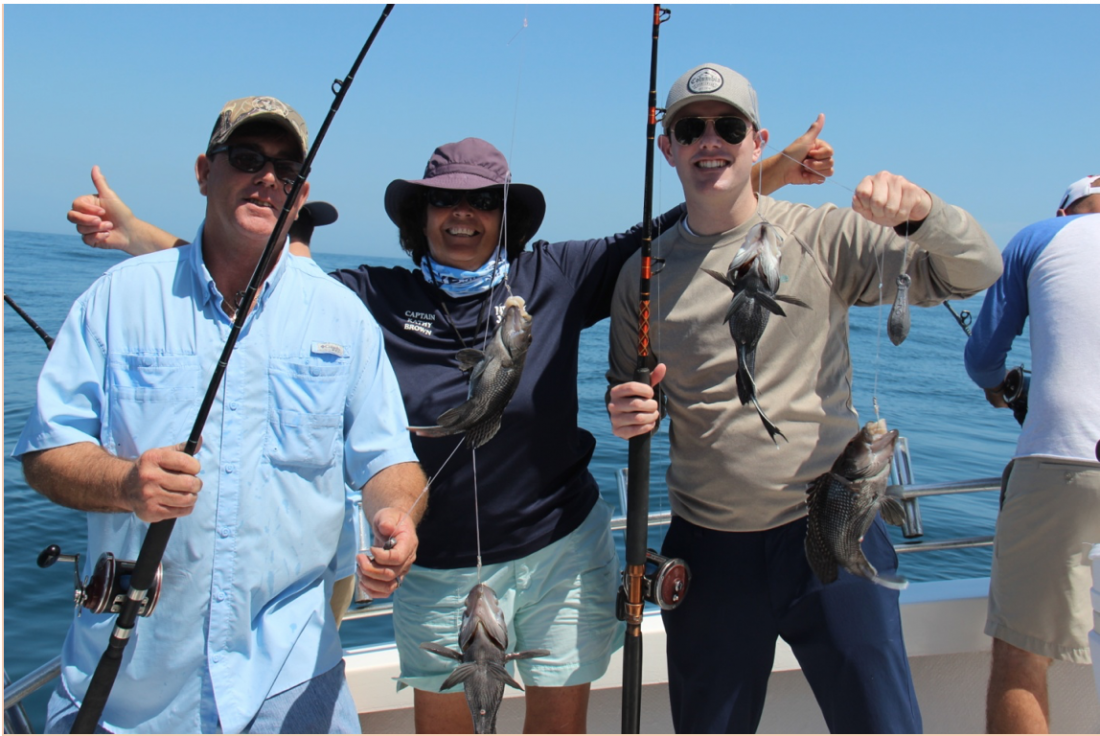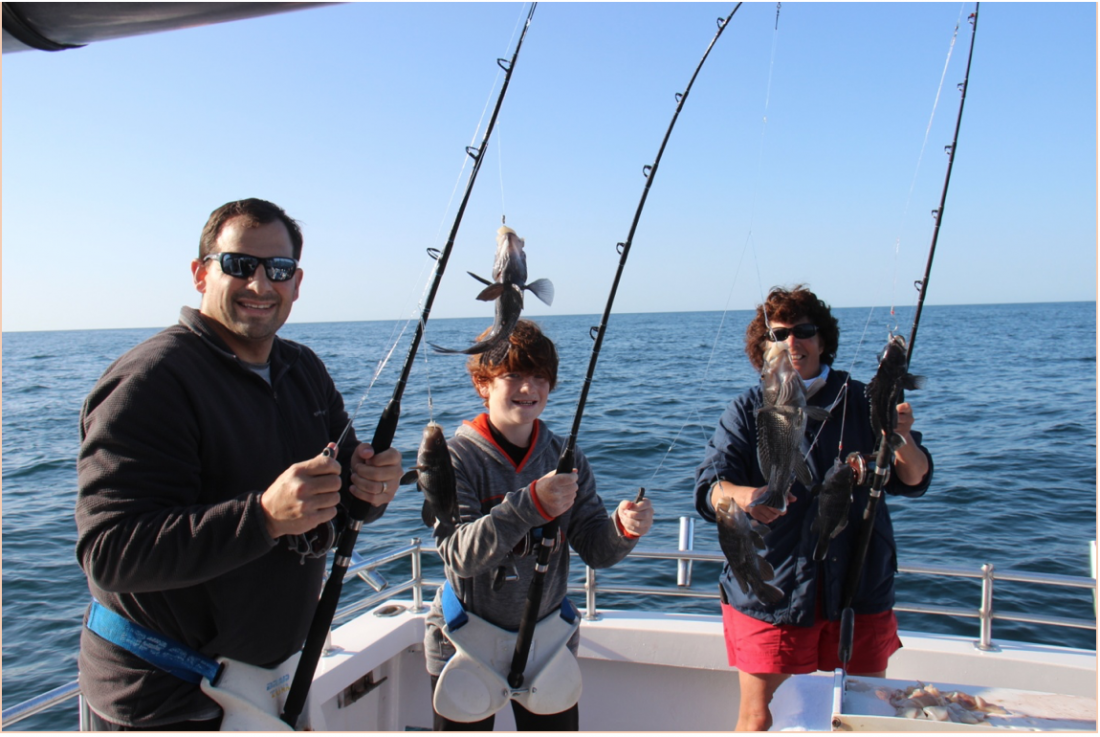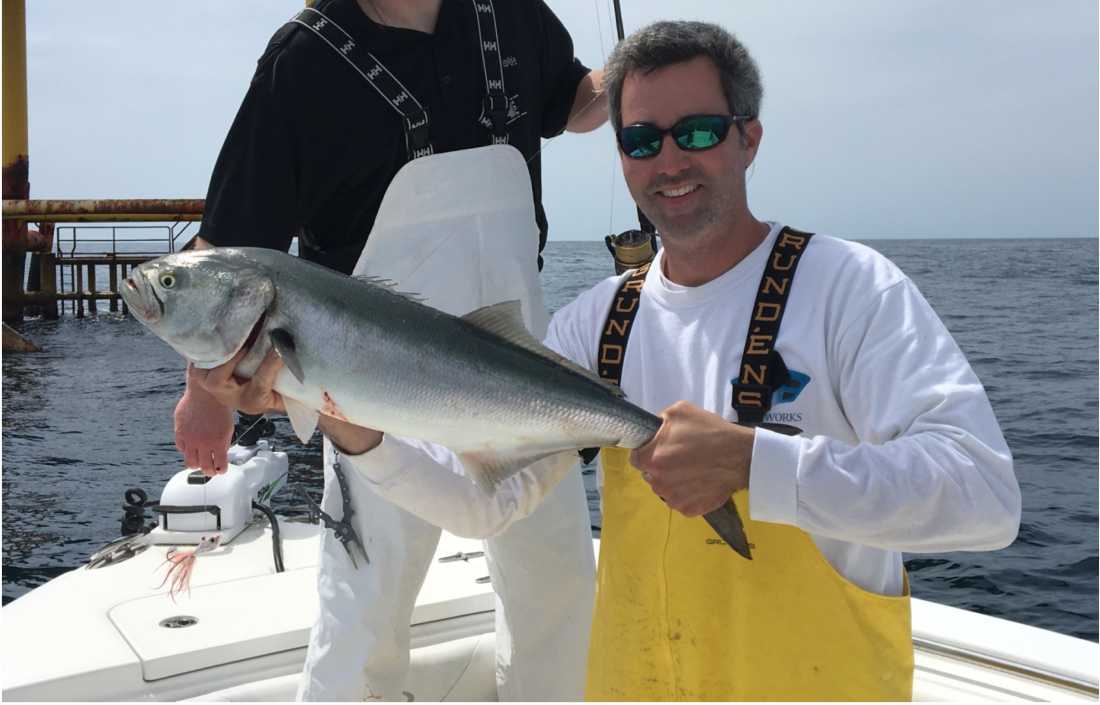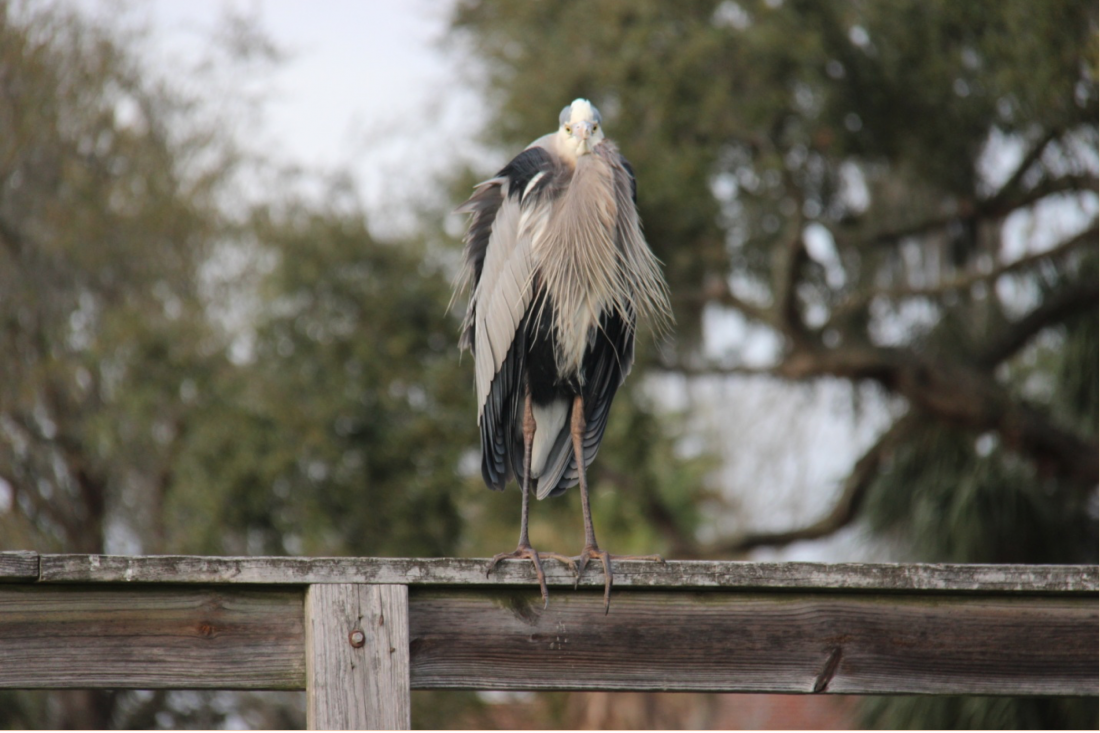April 18, 2018
Fishing statement: To try to insure that fishing stays in the hearts of those that love it and to help the ones that are going too!
While fishing with Captain Garrett Ross of Miss Judy Charters Dane Griswald Macon, Georgia and his son Gauge caught themselves a couple of nice flounder. And what did they do with their fish? Well, Captain Garrett cleaned them and left them whole. And Gauge and Dane had crispy scored flounder with a side order of papaya chunky!
Inshore Fishing Report
Well, this past week proved that inshore fishermen are tough! On the days the winds were blowing 20 plus our captains along with many others went and did their catching best. I have to say, “They still caught fish!” I guess the secret to catching, especially under these conditions, is to too just keep going. I absolutely think that by having to fish under these conditions that fishermen get the opportunity to hone their fishing technique. What does this mean? Well, any fishermen can go on a sunny windless day and have a better chance at catching fish. However, adding in wind, rain, muddy water conditions, cloudy skies, and extra high tides to the mix and you still catch fish, well you had better believe you have accomplished a great catching deal!
The bottom line the fish don’t care, because they are down under. I do have to say they do feed different during crazy weather times, but they still have to eat. All you have to do is to do a little figuring and you GOT FISH!
While inshore fishing with Captain Garrett Ross of Miss Judy Charter Mark Nobles Prattville, Alabama caught this nice red fish. Mark skillfully hooked and landed this fish under some adverse weather conditions! What do I mean? 30 knots winds, full moon tides, and muddy water conditions! You know the old saying, “Them fish still got to eat sometimes!”
We saw some of the biggest trout this past week! One trout measured in at around 24 inches. And then there were a few close contenders. And keep in mind that there were caught on either dead last year’s shrimp or artificial soft baits. How do you fish 2017 last year’s dead smelly shrimp? Well, you can still present it under a float just like you do a live one. Or you can use a Carolina type rig. In this case, I do believe it is more about the smell than anything. When it comes to artificial shrimp or minnow patterns this is bait when worked properly does trigger a serious trout bite. In other words, the trout in this case doesn’t smell, it’s not thinking, it is just attacking something that it wants to eat! However, please remember to even get a hook up opportunity you have to least be located where the fish are! Location, Location, Location!
While inshore fishing with Captain Garrett Ross of Miss Judy Charter Dane Griswald Macon, Georgia caught this nice whiting! So here how this catch went…normally when bottom fishing for whiting in the sound fishermen normally use small pieces of shrimp for bait. However, Dane and Captain Garrett came up this the idea of doing a little bottom bumping with artificial baits. Well, Dane liked this and so did this nice whiting! Now this wasn’t just a fluke bite it happened quite a few times. What is a fluke bite? Just one time, not this many times!
Captain Garrett Ross of Miss Judy Charters is holding up a nice spotted sea trout! Why? Well, he was on a fish man’s holiday and he found them so why not catch them? Did he keep them? No, he let them go and they are still growing!
While inshore fishing with Captain Garrett Ross of Miss Judy Charters Greg Andes Baton Rouge, Louisiana caught this large spotted sea trout! This was one of the spotted sea trout that was extra large size! This fish was caught while the wind was howling and the water was muddy! However, this trout bite wasn’t about the crazy weather day, it was more about “grand determination!” Congratulations Greg
Arificial Reefs
Artificial Reefs Less than 50 feet of water
It best to know the difference between a King (24 inches FL 3 bag limit) and Spanish mackerel! (12 inches FL 15 bag limit)
WE GOT SPANISH MACKEREL!
It is official Spanish mackerel have now arrived to the artificial reefs located in less than 50 feet of water. You might not see them, but they are there! How do you catch them? We have been catching them on #1,#2, and #3 planers, which means they are in holding down under pattern. Behind the planers we have been pulling 0 and 00 Clark spoons. How far behind the planers? Any where from 10 to 15 feet. For those that don’t want to use planers I suggest doing some pitching over the structure. If it is shinny they will most likely hit it. Mixed in with the mackerel we got blue fish and little tunny in assorted sizes.
This is what we call a little tunny! They are fun to catch, because they are strong long pullers! Are they good to eat? Well, I had my first smoked little tunny and you know I don’t like fish, but it wasn’t bad! However, I normally would have poured Georgia cane syrup all over it, but I wanted to get the real smoked fish taste.
Artificial Reefs More than 50 feet
Of course Spanish mackerel, little tunny, and blue fish. And it’s time to start seeing king mackerel! Now as far a bottom fishing, it is definitely a moving game. The black sea bass are there, but they are not everywhere. And what else? Lots of red fish in assorted sizes. Please remember no matter the size these fish are not legal to keep in federal waters. There has been some confusion about this. So if you catch a slot red fish (14-23 inches) it is not legal to keep when caught in federal waters. State water is three mile out. After that everything else is considered federal waters.
Jeremy Goodstein visiting from Athens, Georgia is holding us a nice red fish that he caught while plain old bottom fishing at the artificial reefs.
While offshore fishing with Captain Kathy Brown of Miss Judy Charters on Miss Judy Too this father son duo had a great time. Mike Allen Ludowici, Georgia and his son James Allen Pooler, Georgia are holding up a nice couple of black sea bass. We didn’t a lot of fish, but we sure had a good time!
Jeremy Goodstein and his son Jack age 14 visiting from Athens, Georgia are having a trophy red fish catching kind of a day! Both of these fish were caught schooling in a rip about 12 miles offshore.
Jack Goodstein age 14 visiting from Athens, Georgia is holding a nice white bone porgy that he caught while bottom fishing at the artificial reefs.
Please meet Jeremy Goodstein and his son Jack age 14 visiting from Athens, Georgia. Captain Kathy Brown of Miss Judy Charters is also joining in on the bottom fishing catching fun. What are these fishermen holding up? Black sea bass! What were they using for bait? Cut squid and fish! From this view some were legal to keep and some were released back to the wild. A sea bass also known as a black fish have to be 13 inches tail length to keep and have a bag limit of 7 per person! What does this mean to a single fisherman? 7 black sea bass equals 14 fillets or 28 sandwiches or 112 bites! Bon appetite!
While bottom fishing offshore with Captain Judy on Miss Judy Too Todd Naugle Savannah, Georgia caught a nice pair of black sea bass. The top fish mostly will make about two nice fried fish sandwiches! Don’t forget the tarter sauce!
While bottom fishing offshore with Captain Judy on Miss Judy Too , Alton Bass from Lyons, Ga caught this nice white bone porgy. Over the years I have come to understand exactly what it means when you catch one of these fish. It marks the time when the cycle bite is over and a new bite pattern has begun. Let me explain: This means that after the black sea bass, vermilion, white grunt, genuine red snapper, triggerfish, and red/knobbed porgies have fed enough for one cycle this is when the old white bone gets its turn. I guess you could say they feed alone with their own! Alton and I had something in common..we both shared the liking for Crown Royal!
While offshore fishing with Captain Judy Miss Judy Charters James Allen Pooler, Georgia and Cody Carter Buford, SC had a great day. It was a clam sunny kind of a day. Cody Carter caught this nice red fish, which was promptly released back to the wild! Now this is what I call a nice set of fish catching smiles!
Savannah Genuine Snapper Banks
Just go, because the catching is great! We have been catching football size vermilion snapper also known as b liners, large green hump back black sea bass, amberjack, bucket size trigger fish, and assortment of other biters. It is worth the ride…and of course for every 10 bottom fish you catch you can almost count on one of them being a genuine red snapper. No you cannot keep genuine red snapper. And grouper season is not open until May 1, 2018.
Captain Mike Counihan is holding up a nice blue fish, better known as a chopper blue fish. He caught while bottom fishing at the Savannah Snapper Banks. (Rusty R2 naval tower in the back ground!)
Back in the 70’s and 80’s this size blue fish migrated through our area during the months of February through April. Hundreds of these fish would take over the artificial reefs L Buoy and J Buoy. And I am talking about they would eat their way through these areas snacking on anything and everything that would fit in their mouth.
And here’s what we learned about this fish and you aren’t going to believe this either, but it is true!
I found out that when these fish are schooling on or near the surface that they always lean and feed towards the left. The reason for this is that their left eye was normally larger than they right eye. So therefore the old chopper blue fish also became known as “Lefty!”
We soon figured out that the blue fish is considered “a glutton!” What does this mean when talking about the blue fish? This means that they eat until their stomach is full; they regurgitate and start eating again. Now here’s the thing when they regurgitate a slick is formed, which brings on the attentions of all size fish, which means where you got fish you got more fish! We also found out that once the blue fish’s regurgitation floated to the surface a sweet smell of melons permeated the air. So therefore if you happened to be downwind it was easy to find the blues! And not get the non-catching blues!
What did we use for bait? Back then we used squid, cut fish, and cigar minnows. And to better get and keep their attention we kept on board 5 gallon buckets full of sinkable freshwater fish food pellets. How did we know that this worked? When we brought the fish on board they would throw up mouth full’s of these mashed up pellets. The old blue fish also would hit worked artificial squid. Jigs that were tied with white hair or feathers worked great. Way back then, white feathers were usually dried chicken feathers!
Gulf Stream!
When the wind stops blowing we will give you a blue water fishing report!
Little Miss Judy Believe it or Not!
This is our new dock mascot! It is a blue heron that has been sitting in lots of winds! Gives a new meaning to phrase ruffled tail feathers! Our last dock mascot was a white heron and we named it Mr. Knees! Down the creek at Hogan’s Marina and Joey Bait House this bird’s name was Zeek! We need a new name for our mascot. If you have any ideas we I am all ears! Let me know…fishjudy2@aol.com
“BIRD TALES”
It’s amazing what comes brings back an old memory when you are just staring out into space. I was standing on my back porch the other day when this happened. A dove flew up, landed, and started feeding on some of the birdseed that I had put out. I got to thinking about Daddy and little Miss Judy (me) when we went out on our bird hunting expeditions. My father was an avid hunter. He hunted everything that was allowed and then some that wasn’t, but that’s another story. My father’s first choice was bird hunting. As a small child I use to accompany him quite a bit. When bird season opened whether he chose to dove, marsh hen, or duck hunt I always wanted to be by his side. Daddy always had a plan. His most important plan was how he was going to shoot the birds in question. In fact here’s how it went when we would go dove hunting at Aunt Hattie’s farm.
We would sit in the bushes on the out skirts of the area in which the dove were supposed to fly in to feed. In other words it was a “Baited Field.” As the birds would fly in daddy would explain how he was going to shoot them. He had three methods in which he always talked about. The first was to shoot the dove on the way into the field. The second way was to shoot after it took off and the third was the simplest, which was the overhead shot. He called it the “straight up and down shot.” Since I was Daddy’s little retriever of all birds the last was always my favorite method!
Thanks for reading! Captain Judy
